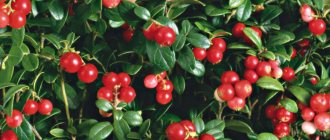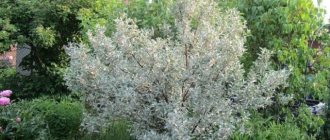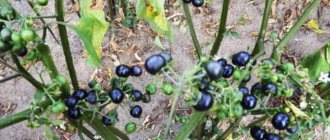During flowering, Common Goldenrod will definitely not go unnoticed. Its bright yellow flowers attract attention and also become the main decoration of the place in which this plant grows. However, in addition to its appearance, it also has many useful properties. The beneficial effects of the plant on the body have been scientifically proven, but despite this, it also has several contraindications. Another advantage of Common Goldenrod is its easy care.
Types and varieties of plants
The genus of this wonderful herb includes more than 100 species, of which less than 10 are used. The most popular species is common goldenrod. This plant has a sessile upper leaf plate, and the leaves at the base of the stem have petioles. Another popular species is the Canadian goldenrod. Its stems are larger than those of common goldenrod, and the foliage and upper parts of the shoot are densely covered with villi.
Goldenrod in landscape design
Most solidago varieties can be grown as ornamental and used to create compositions that are as close as possible to their natural appearance. They are placed on a ridge, flower bed, mixborder, or used as a border or tapeworm.
Tall species are planted in the back of the site, creating a background for other plants, while dwarf species are placed in the foreground. The flowering of goldenrods can be extended for several months if you choose the right varieties.
Rudbeckia, echinacea, zinnia, dahlias and cereal plants look advantageous as neighbors next to solidago.
Where and how does it grow
Common goldenrod is very common throughout North Africa and Eurasia. The height of the plant is approximately 60-130 centimeters and blooms in June-August. Canadian goldenrod grows primarily in the foothills of eastern North America and a little in Eurasia. Its height is 50-150 centimeters, and blooms a little later - in August-September.
Reproduction
You can increase the number of copies in several ways:
- Planting bushes in spring or summer.
- Cuttings. To do this, in the summer, a pair of young shoots are separated, dividing the root system. You can also trim the top of a long annual shoot and root it later.
- Another way is to trim shoots from the bush during flowering. This will stimulate dormant buds and give rise to new shoots.
- Seminal. The collected planting material is sown in the ground at 18–22°C. After 2-3 weeks you can observe the first shoots. It is worth noting that the seeds, thanks to their tufts, scatter around and give new growth, gradually turning into thickets. To avoid this, young shoots must be removed and panicles must be trimmed after flowering to prevent the seeds from ripening.
Uses of goldenrod
In cooking
The herb solidago (goldenrod) is usually used in cooking for medicinal purposes, about which you can read more below.
In medicine
The herb and flowers of goldenrod are widely used in medicine. The herb is used to make an excellent tea, which becomes a source of beneficial antioxidants, reduces acidity and also helps strengthen capillaries. But goldenrod honey is not only tasty, but also healthy - it will help you get rid of sore throat, rhinitis, sinusitis and even chronic runny nose.
When losing weight
It is usually not customary to use the herb for weight loss, but due to the fact that goldenrod cleanses the intestines, kidneys and urinary tract well, you can achieve a weight loss effect. In any case, you should not do this without consulting a doctor.
At home
The goldenrod flower is perfect when planning your landscaping. The hybrid variety of goldenrod is perfect for a flower bed, as it does not self-sow and will not oppress neighboring plants. Goldenrod also does useful things - it attracts beneficial insects and butterflies to your flowerbed. The bright yellow flowers of goldenrod can last beautifully for two weeks in a vase. The flowers have a pleasant and unobtrusive aroma.
In cosmetology
The use of goldenrod in cosmetology is also widespread. In the first place is skin care, where the beneficial properties of the herb can be listed for a very long time. The herb is widely used for skin elasticity and lifting, is an excellent antioxidant, stimulates the synthesis of elastin and collagen, and also has an excellent anti-aging effect.
Medicinal properties
Common goldenrod is widely used in medicine. For the first time, medicines based on it began to be prepared more than 300 years ago. Many recipes are still used today. In addition, the extract of this plant is added to various pharmaceutical preparations.
This demand for Goldenrod is due to its beneficial properties:
- heals wounds;
- has a diuretic effect;
- has antibacterial properties;
- relieves inflammatory processes;
- eliminates swelling;
- relieves spasm;
- stops bleeding;
- has an antifungal effect;
- prevents the development of cancer;
- has a choleretic effect;
- strengthens the immune system.
In addition, decoctions and tinctures from this plant are considered powerful antiviral agents. That is why in ancient times it was used mainly to treat diseases of viral etiology. Thanks to its composition, Goldenrod quickly relieved symptoms and eliminated ARVI, herpes, and cystitis.
Another unique effect of Goldenrod is that it is astringent. Thanks to this property, the plant successfully fights diarrhea and various infectious diseases of the stomach. It is interesting to note that due to this effect, Goldenrod is used not only to treat people, but also animals. Veterinarians recommend giving pets an infusion of the herb for stomach upset.
Harm and contraindications
Like any plant, goldenrod has its contraindications and can be harmful to your health. The herb contains small amounts of toxins, which can be harmful if overdosed. Goldenrod is absolutely poisonous to pregnant and lactating women. Contraindicated in people with glomerulonephritis. If you are insulin dependent or have diabetes, goldenrod should be taken with caution.
Goldenrod is most often taken for kidney diseases, but it is worth remembering that the acute course of the disease is first relieved, and only then the herb is used. Otherwise, the beneficial properties of the herb will harm you. Doctors also do not recommend abusing the plant if you have high blood pressure.
Solidago care
Care activities are simple and do not require much attention, especially if the planting site is well chosen.
Lighting
The optimal location for the plant is a partially shaded place with flickering light, for example, on the north side of large trees with sparse foliage. However, it will grow well in open areas. In a sunny place, flowering will occur earlier and will be more magnificent, but in a shady place it will last longer.
The soil
Goldenrod is absolutely undemanding in terms of soil composition. Of course, it will grow better in fertile, permeable sandy soils, but the difference is not so obvious as to select rich areas from more capricious crops.
Watering
The flower is highly drought-resistant, but complete, and even more so, prolonged drying of the soil will not benefit its vegetative development and flowering. Therefore, you should provide him with regular (without fanaticism) moderate hydration.
Top dressing
Moderation and caution should be used with fertilizers. It is recommended to apply them only when necessary, for example, when there has been no replanting for several years and there are signs of soil depletion - weak and short flowering or its absence, depressed appearance, poor foliage. In this case, it is recommended to add mineral complexes. Uncontrolled feeding leads to an increase in greenery to the detriment of budding.
If the soil is poor, the nitrogen composition in the complex should be at least 20%.
Wintering
Solidago does not need any shelter during the cold season, since it is a highly winter-hardy crop. But for better wintering, giving a neat appearance and improving the prospects for flowering next year, it is recommended to trim the upper part of the stems, leaving no more than 15 cm.
Bloom
As already mentioned, the timing of flowering depends not only on the variety, but also on the illumination of the area. This allows them to be moved to some extent at will. In addition, low-growing hybrids bloom earlier, while representatives of tall varieties can open their first flowers in September. Removing faded inflorescences will prolong flowering, make the planting more neat in appearance and prevent active self-seeding and clogging of the area.
Trimming
In addition to pruning on the eve of winter, it is also necessary to carry out shaping so that the bushes remain compact and not thickened. You can thin out shoots at any time during the warm season.
Nutritional value and chemical composition
To date, there is no complete and reliable description of the composition of goldenrod; the grass is very poorly studied. It is known that goldenrod contains terpenoids, glycosides, alkaloids, saponins, flavonoids (quercetin, rutin, etc.). Also found in the composition were bitter and tannin substances, essential oil, coumarins, as well as derivatives of phenolcarboxylic acids (chlorogenic, hydroxycinnamic, caffeic).
Description
Common goldenrod is a perennial herbaceous plant. He belongs to the Astrov family. The name of the plant comes from the Latin “solidus”, which means strong and healthy in its medicinal properties. Goldenrod is popularly called “Fox Tail” and “Golden Rod”.
It is interesting to note that among all species of this plant, the most common is the common one. It has a fairly rich chemical composition, which contains organic and phenol carbonic acids, saponins, vitamins A, E, B1, K, PP, and other valuable substances. It is thanks to its composition that the plant has medicinal properties.
How to grow, care and pests and diseases
Planting should be carried out according to the following plan:
- Goldenrod seeds quickly lose their viability, so you need to plant seeds that are no more than 1 year old.
- Planting is done immediately in open ground.
- It is necessary to plant goldenrod in the spring, when the air temperature reaches +18 and above.
- We dig small holes in the desired area and try to evenly distribute the seeds in them.
- We moderately moisten the soil with the seeds and expect the first ascents in 14-20 days.
- If you want to divide the plant, then this must be done after 3-4 years. Simply divide the goldenrod into several parts and leave a distance of 40 centimeters between them.
The flower does not require special care, so it will appeal to busy gardeners. Goldenrod needs well-lit areas of the garden and abundant watering without stagnation in the soil. Very rarely, goldenrod is affected by powdery mildew and aster rust. In this case, fungicides will help you.
Appearance
If you know the botanical characteristics of the Common Goldenrod, then it can be easily distinguished from other species, for example, from the Canadian Goldenrod. It is a glabrous or hairy plant, the rhizome of which goes quite deep into the ground. This plant has a tap-type root system. Quite often a shoot can be seen above the ground, which can grow up to 1 meter in height. It alternately bears elliptical or ovoid leaves. They are green in color and have a jagged edge.
During the flowering period (late spring), racemose inflorescences with many baskets are formed on the plant. They contain small yellow flowers. At the end of September, fruits with seeds form in place of the inflorescences. Goldenrod can be grown from them.
How to withdraw
If you are tired of being next to goldenrod, then removing it will not be difficult. Experienced gardeners use herbicides, which, when used correctly, give 100% results. It is recommended to mow it if the height of the plant is not higher than 10-15 centimeters, but the mowed grass must be stored away from the ground, as it tends to ripen.
Wintering
As mentioned above, the Goldfinger cinquefoil is considered an unpretentious plant, tolerates the cold season well and does not require complex care. In this case, it is necessary to adhere to minimal agricultural technology when growing the variety.
Since the flower is naturally resistant to temperature fluctuations, it is not necessary to cover the plants for the winter. You can also leave the plant at the planting site without digging up and moving the bushes to a greenhouse or insulated place. With the onset of winter, the bushes are left in the open air without any changes. In this state they wait for the arrival of spring.











